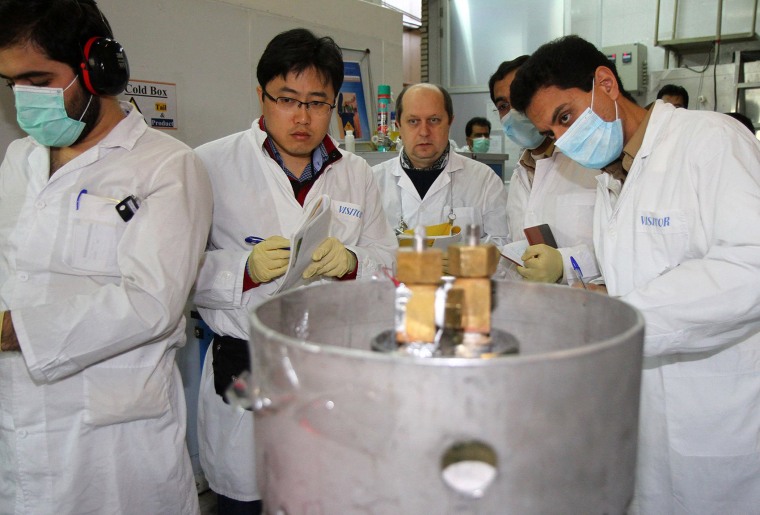The United States and our negotiating partners unveiled the international nuclear agreement with Iran in July, but the announcement was really only the start of a long and difficult process. In order for the broader policy to move forward, Iranian officials, among others, would have to meet their obligations -- and no one was certain that would happen.
As of yesterday, the process remains very much on track.
A ship carrying more than 25,000 pounds of low-enriched uranium materials left Iran for Russia on Monday in a step toward honoring Iran's July 14 nuclear deal with major powers, the United States said. Under the landmark nuclear accord, certain U.S., European Union and U.N. sanctions are to be removed in exchange for Iran accepting long-term curbs on a nuclear program that the West has long suspected was aimed at creating a nuclear bomb. A key provision of the agreement -- negotiated by Iran with the United States, Britain, China, France, Russia and Germany -- is Tehran's commitment to reduce its stockpile of low-enriched uranium to below 660 pounds (300 kg).
In a written statement, Secretary of State John Kerry called the development "one of the most significant steps Iran has taken toward fulfilling its commitment" under the diplomatic agreement.
The New York Times' Jonathan Weisman noted that as recently as a year ago, many officials -- inside the Obama administration and out -- believed Iran would never actually part with its nuclear fuel. And yet, yesterday, that's exactly what happened.
All of this, of course, keeps the P5+1 partners on track towards "Implementation Day."
And what, pray tell, is "Implementation Day"? Once the IAEA confirms that Iran has met a series of benchmarks established by the nuclear agreement, economic sanctions against Iran will be eased and the broader policy will be implemented in earnest.
As of yesterday, that first major benchmark is cleared, and as the Times added, for the first time in nearly a decade, Iran now appears to have "too little fuel to manufacture a nuclear weapon," even if it wanted to.
Every critic of the deal who said Iran would never honor its commitments, at least for now, appears to be wrong.
